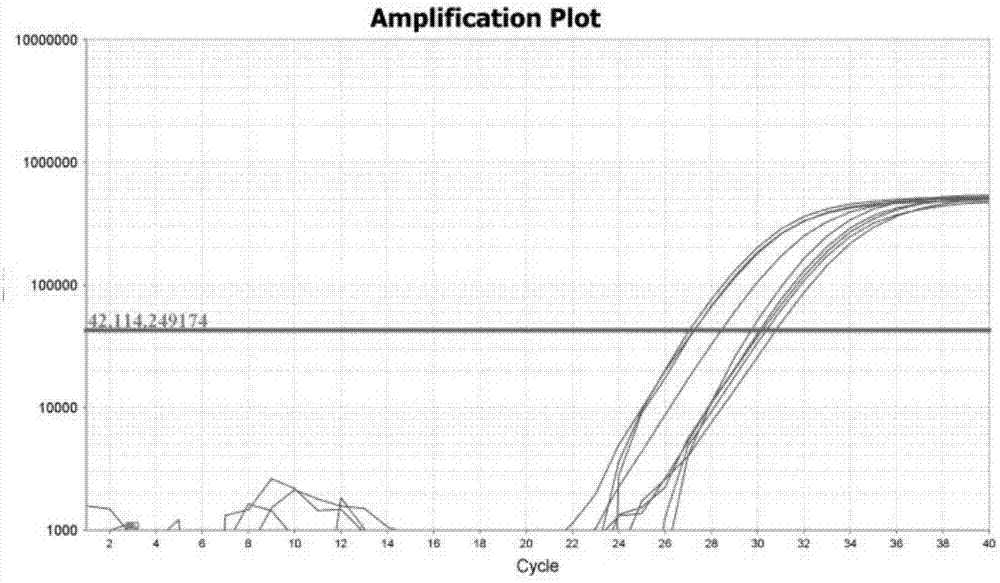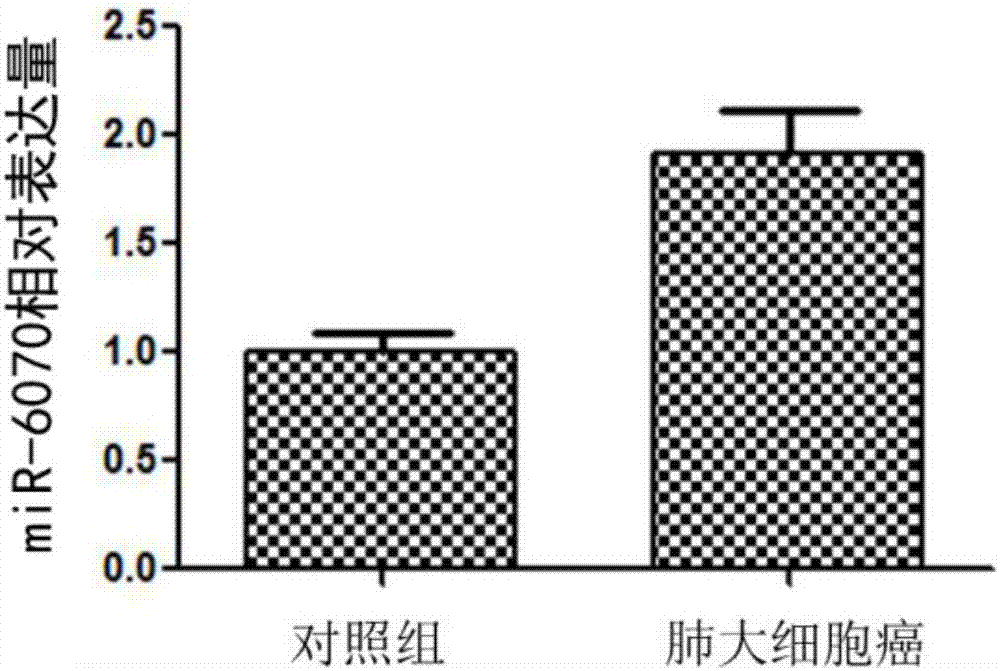Reagent kit for lung cancer detection
A kit and reagent technology, applied in the field of medical detection, can solve the problems of poor treatment effect, high degree of malignancy, and inability to detect large cell lung cancer early, and achieve the effect of rapid and effective detection
- Summary
- Abstract
- Description
- Claims
- Application Information
AI Technical Summary
Problems solved by technology
Method used
Image
Examples
Embodiment 1
[0013] Sample Collection and Ethics Statement
[0014] Blood was collected from 60 cases of large cell lung cancer and 30 cases of normal people. All samples were from the First Affiliated Hospital of Soochow University and the Second Affiliated Hospital of Soochow University. The samples were collected from September 2015 to June 2017. The collection of the above specimens was approved by the Ethics Review Committee of the First Affiliated Hospital of Soochow University and the Ethics Review Committee of the Second Affiliated Hospital of Soochow University, and all subjects signed the informed consent.
[0015] The above-mentioned patients with large cell carcinoma of the lung were obtained from serum specimens with cytological or pathological diagnosis through biopsy or surgery, and the patients had not undergone any radiotherapy or chemotherapy treatment before blood collection.
[0016] 1. Extraction of serum miRNA
[0017] 1) Add 500 μl TRIzol to 200 μl serum, vortex for...
Embodiment 3
[0040] Example 3 Fluorescent quantitative PCR detection of miRNA expression in gastric imprinted choriocarcinoma group and control group
[0041] 1) Fluorescence quantitative PCR
[0042] The kit uses FastFire qPCR PreMix (SYBR Green) from Tiangen Company. First, thaw FastFire qPCR PreMix, templates, primers, and RNase-free water, and dissolve all reagents at room temperature and mix thoroughly. Next, configure the fluorescent quantitative PCR system.
[0043] Fluorescent quantitative PCR system
[0044]
[0045] For miRNA expression detection, three parallel reactions were set up for each sample, and snRNA U6 was used as an internal reference.
[0046] The forward primer sequence in the above table is: ACACTCCAGCTGGGCCGGTTCCAGTCC (SEQ ID NO: 2).
[0047] The reverse primer sequence in the above table is: TGGTGTCGTGGAGTCG (SEQ ID NO: 3).
[0048] At the same time, U6 was used as an internal reference, and the forward primer was: GCTTCGGCAGCACATATACTAAAAT (SEQ ID NO: 5)...
PUM
 Login to View More
Login to View More Abstract
Description
Claims
Application Information
 Login to View More
Login to View More - R&D
- Intellectual Property
- Life Sciences
- Materials
- Tech Scout
- Unparalleled Data Quality
- Higher Quality Content
- 60% Fewer Hallucinations
Browse by: Latest US Patents, China's latest patents, Technical Efficacy Thesaurus, Application Domain, Technology Topic, Popular Technical Reports.
© 2025 PatSnap. All rights reserved.Legal|Privacy policy|Modern Slavery Act Transparency Statement|Sitemap|About US| Contact US: help@patsnap.com



